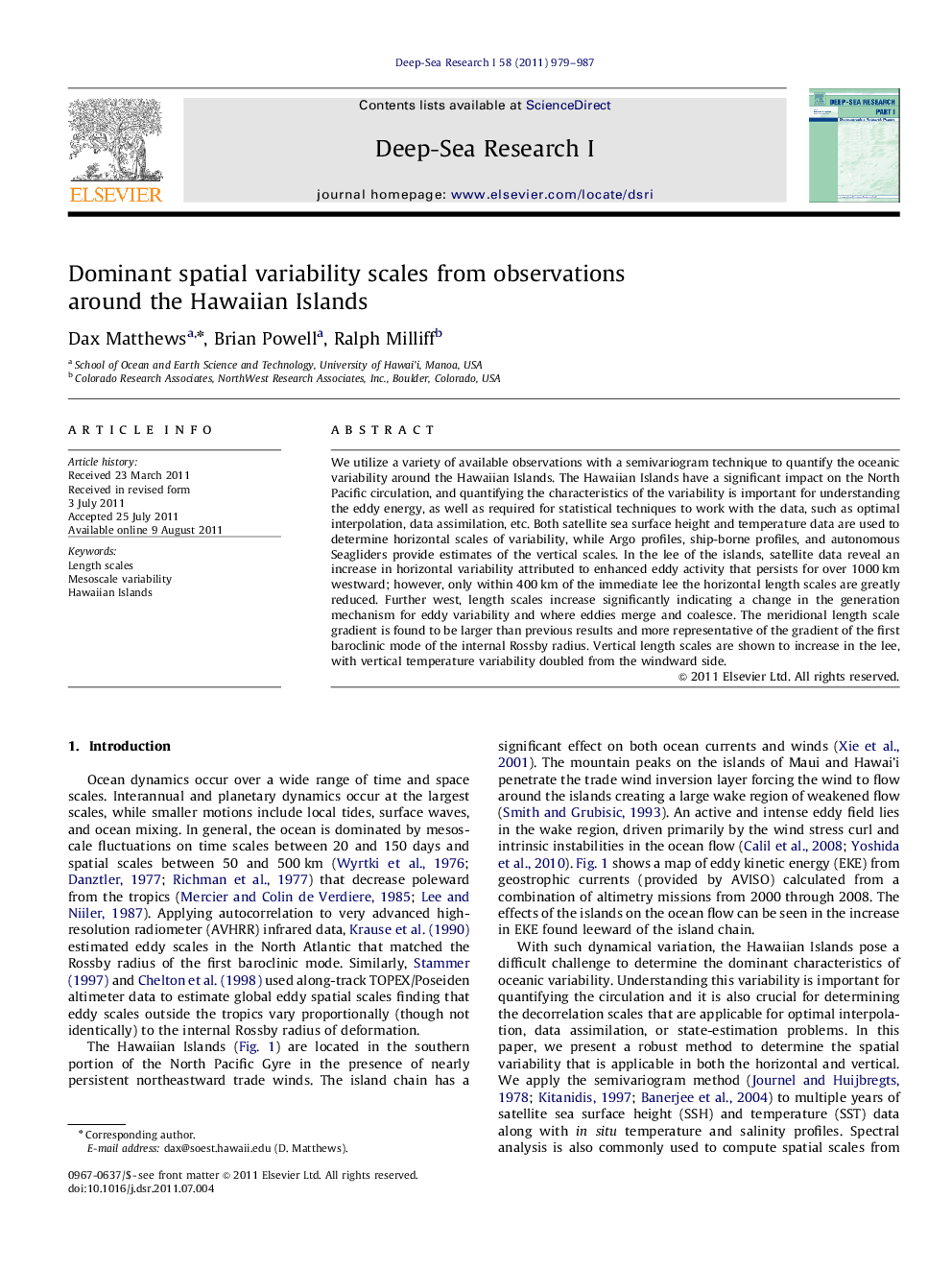| Article ID | Journal | Published Year | Pages | File Type |
|---|---|---|---|---|
| 4534803 | Deep Sea Research Part I: Oceanographic Research Papers | 2011 | 9 Pages |
We utilize a variety of available observations with a semivariogram technique to quantify the oceanic variability around the Hawaiian Islands. The Hawaiian Islands have a significant impact on the North Pacific circulation, and quantifying the characteristics of the variability is important for understanding the eddy energy, as well as required for statistical techniques to work with the data, such as optimal interpolation, data assimilation, etc. Both satellite sea surface height and temperature data are used to determine horizontal scales of variability, while Argo profiles, ship-borne profiles, and autonomous Seagliders provide estimates of the vertical scales. In the lee of the islands, satellite data reveal an increase in horizontal variability attributed to enhanced eddy activity that persists for over 1000 km westward; however, only within 400 km of the immediate lee the horizontal length scales are greatly reduced. Further west, length scales increase significantly indicating a change in the generation mechanism for eddy variability and where eddies merge and coalesce. The meridional length scale gradient is found to be larger than previous results and more representative of the gradient of the first baroclinic mode of the internal Rossby radius. Vertical length scales are shown to increase in the lee, with vertical temperature variability doubled from the windward side.
► Semivariogram tech. used to quantify characteristics of oceanic variability. ► Necessary for optimal interpolation and data assimilation techniques. ► Reduction in horizontal length scale found in the immediate lee of Hawaiian Islands. ► Vertical length scales and temperature variability increase in immediate lee of the islands.
